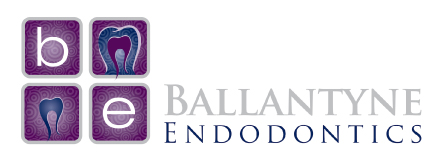What is a CBCT Scan and Why Do You Need One?
Key Takeaways:
Detailed Imaging:
CBCT (Cone Beam Computed Tomography) scans provide high-resolution 3D images, offering detailed views of teeth, bones, and tissues for accurate diagnosis and treatment planning.
Precision in Endodontics:
It enhances the precision of root canal treatments by identifying issues that might not be visible in traditional X-rays.
Minimally Invasive:
CBCT scans are non-invasive, quick, and effective in diagnosing complex dental conditions.
If you recently visited your dentist or endodontist and heard you need a CBCT scan, you may wonder what that is and why it’s beneficial.
First, we will start with the why since that is most important to you as a patient. CBCT scans (also called “cone beams”), provide precise and comprehensive 3D pictures of your teeth. They can help your provider examine otherwise hard-to-access areas like curved roots or bone loss. This aids in detecting conditions like periodontal disease, tooth decay, and cavities early. CBCT scans assist dentists in planning treatments like root canals, restorations, implants, and oral surgery.
Now that you understand why, it may help to know a little more about what it is. Please remember that this article offers a simplified explanation and isn’t a substitute for professional dental advice.
What is a CBCT Scan?
A CBCT scan, or Cone Beam Computed Tomography scan, is a type of x-ray that produces 3D images of your teeth, soft tissues, nerve pathways, and bone within a single scan. It’s used in dentistry to provide a more detailed and accurate view of the mouth and maxillofacial region.
Unlike traditional x-rays, which provide a flat 2D image, a CBCT scan allows the dentist or endodontist to see a 360-degree view of the tooth and surrounding areas. This can be particularly useful for planning for root canals, dental implants, diagnosing TMJ disorders, or assessing the extent of dental trauma.
A CBCT scan is still considered a safe and effective diagnostic tool, even though it does expose you to minimal radiation (like a regular dental x-ray or even a security scanner at the airport). The detailed information the CBCT provides can be invaluable in ensuring successful treatment outcomes, so it is well worth it. The FDA recommends using it when medically necessary, such as when figuring out which tooth is diseased and whether it can be saved with a root canal.
A CBCT scan is also a quick procedure. The actual scanning takes between 20 to 40 seconds for a full mouth scan and less than 10 seconds for a regional scan. However, the entire process, including preparation, positioning, and the scan, typically takes 10 to 15 minutes.
How Cone Beam 3D Technology Helps You Get Better Care
Cone Beam 3D technology is a game changer in the highly specialized practice of endodontics and dentistry as a whole. You see, endodontists work with the minuscule and complex root canal system. We need to treat patients using an operating microscope that allows us to see all those tiny details.
Anything that improves our ability to see also enhances the patient experience and outcomes.
CBCT scans might be taken several times during your procedure, so your provider can evaluate how it is going–and they are part of your dental record for future reference. The Cone Beam 3D technology provides very clear, 3D images of teeth, jawbone, nerve pathways, and soft tissues.
With a CBCT, you have a lower risk of needing retreatment in the future. CBCT can even eliminate the need for exploratory surgery in some cases. Approved by the FDA in 2001, it uses a rotating beam to take pictures of a cross-section of images, including the middle of the tooth.
Combining Imaging with Treatment
As mentioned, a CBCT scan can reveal a range of potential dental problems. These include tooth decay, bone loss, unusual growths, facial fractures, and infections of the periodontal tissue. It can even detect endodontic concerns within the roots or dental pulp.
When combined with other state-of-the-art treatments like Gentlewave, the result is a less invasive root canal procedure, which is more pleasant for you as the patient and has an even higher likelihood of success than traditional methods.
A CBCT scan is not just for root canals though, its benefits apply to other restorative techniques as well. Whether you have suffered a traumatic injury to your mouth, have a cracked tooth, or damaged roots, better images improve the diagnosis, treatment, and documentation process for a wide variety of cases.
Combining the right tools with skilled, compassionate dental professionals helps you get the care you deserve. In addition to high-tech imaging, the team at Ballantyne uses effective low-tech examination techniques like testing for hot or cold sensitivity and listening carefully to your symptoms. Like any skilled medical provider, we use every tool available to save every tooth we can.
If you need a root canal or another restorative treatment, ask for a referral to an endodontist. Your general dentist and endodontist should work closely together as a team seeking the best care options for your needs.
Next Steps: Don’t Hesitate If Your Endodontist or Dentist Suggests a CBCT Scan
When looking for an endodontist, choose someone who uses the best dental imaging tools and state-of-the-art treatment options. Of course, technology isn’t the only consideration; the endodontist’s skill and commitment to their patient are also key factors when choosing a provider.
Remember, a CBCT scan offers the following:
- The opportunity to better visualize any problems in the jaw, teeth, and soft tissues.
- The ability to better plan treatment.
- The chance to see the tiny internal anatomy that is otherwise too difficult to see with a traditional 2D x-ray image or the naked eye.
If you live in Charlotte, North Carolina, please consider the team at Ballantyne Endodontics. We feel privileged that Charlotte area residents trust their teeth to us. We have seen over and over how skilled care relieves pain and restores balance in our patients’ lives.
Members of the Ballantyne Endodontics team share a passion for restoring your oral health. Dr. Sonia Chopra, D.D.S., is the founder of Ballantyne Endodontics.
She’s a “tooth saver extraordinaire” with a unique backstory. Born missing eight teeth, she experienced a wide range of dental procedures as a patient, which gives her a deep understanding of what her patients go through. Her journey to becoming an endodontist was inspired by a compassionate endodontist who not only correctly diagnosed and treated her excruciating tooth pain but also educated her about the process.
This is just one example of why our dental team is so focused on using the best tools available to provide excellent care.
Contact us today to schedule a consultation or ask your dentist for a referral.

